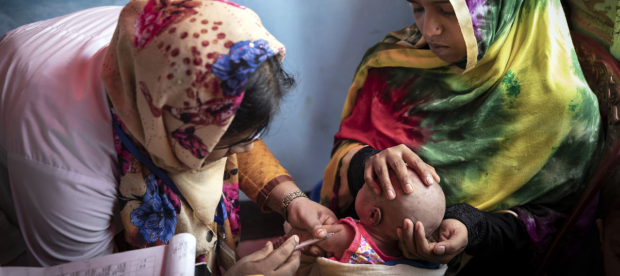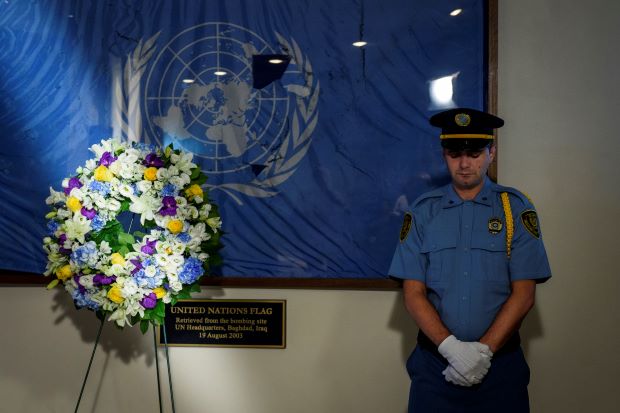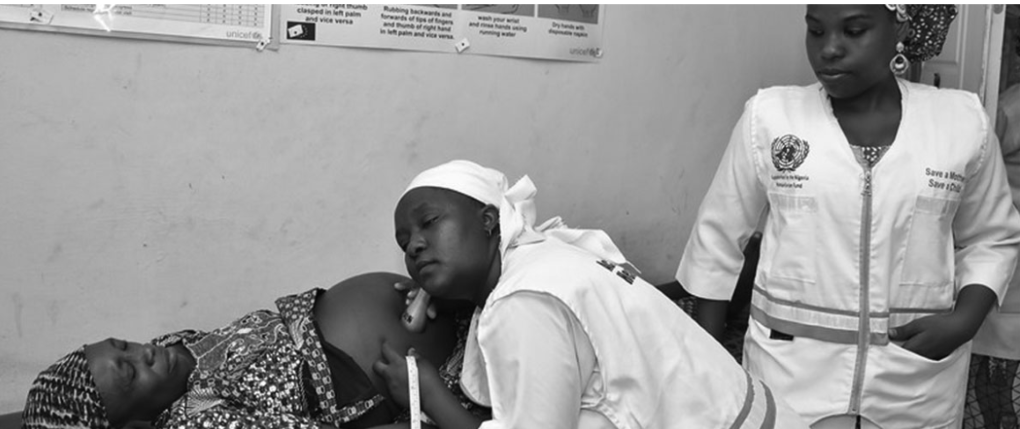Monday, August 19th marked the 10th anniversary of World Humanitarian Day, which honors the thousands of humanitarian workers across the world that risk their lives every day to help those in crisis. This year, female humanitarian workers received special recognition for their contributions to the field, acknowledging that they are more susceptible to harm working in perilous locations around the world, but continue to be “the first to respond and the last to leave.”
As such, the UN launched the #WomenHumanitarians global campaign to honor “the life-saving contribution of women humanitarians throughout the world by raising awareness of, and support for, women who are often the unsung heroes on the front lines in some of the world’s most difficult and dangerous places.” Organized by the UN Office for the Coordination of Humanitarian Affairs (OCHA), the campaign posted a different story of a female humanitarian worker every hour for the 24 hours of World Humanitarian Day 2019.

Amina Hagi Elmi, also known as “Mama Amina,” is one of the phenomenal women whose story was covered during the campaign. Elmi distributes “dignity kits” to women and children in refugee camps in Somalia. The kits consist of traditional Somali dresses, scarves, underwear, pants, sanitary pads, soap and laundry detergent. According to the UN OCHA, through her organization, Save Somali Women and Children (SSWC), Elmi has given an estimated 70,000 Somali women and children refugees back their dignity. “To be able to cover yourself is part of having dignity in the community according to our culture and religion,” says Fatuma Sharif, one of the receivers of the dignity kit.
Barbara Mbroukouzou is another extraordinary female humanitarian receiving recognition during the #WomenHumanitarians campaign. She is the only female driver in a 15-vehicle convoy that aids Central Africans returning to the Central African Republic (C.A.R.) from the Republic of Congo after being held there as refugees. Mbroukouzou performs her duties in the suffocating heat as the vehicles have no air conditioning, battling poor road conditions, and encountering daily risks to her safety in a war-torn country. As she risks her life to save refugees, she also defies gender stereotypes driving a truck, which in C.A.R. is seen as a man’s job, especially a 4×4.“Seeing a woman like Barbara at the wheel could inspire other young Central African women to break the myth that driving is a man’s job,” says Ngoubou Jos, a UNHCR driver from the Congo.
As inspiring as these stories are, humanitarians are in dire need of support and protection. World Humanitarian Day was designated on August 19 when the United Nations General Assembly adopted a resolution five years after the terrorist bombing of UN Headquarters in Baghdad, Iraq. The day commemorates those 22 humanitarian workers who lost their lives in the truck bombing, including Sergio Vieira de Mello, UN High Commissioner for Human Rights and the head of the UN mission in Iraq, and the 150 wounded. The day also honors all humanitarians who have lost their lives in the line of duty.
Although humanitarians are supposed to be protected by international law, they are continuously exposed to threat. Humanitarians work in the most dangerous places on earth, according to UN News, from the “war-wounded in Afghanistan, to the food insecure in the Sahel, to those who have lost their homes and livelihoods in places such as Central African Republic, South Sudan, Syria and Yemen.” Furthermore, “Since August 2003, more than 4,500 aid workers of all genders have been killed, injured, detained, assaulted or kidnapped while carrying out their work. That averages out to five attacks per week.” According to UN Deputy Secretary-General Amina Mohammed, “Last year saw the second highest number of attacks on aid workers on record, with 405 aid workers attacked, 131 killed, 144 wounded and 130 kidnapped in a total of 226 separate incidents.”
In his message commemorating World Humanitarian Day 2019, UN Secretary-General Guterres, pleaded for all international communities to “ensure that humanitarians are protected from harm, as required under international law.” The Secretary-General continued by saying that, “Serious violations of international humanitarian and human rights law continue around the world,” and insisted that, “They must be investigated and prosecuted.”
Women humanitarians, however, take on additional risks as gender-based violence tends to escalate during times of crisis. According to UN News, “women humanitarians are at particularly high risk of robbery, sexual assault and other violence.” Yet, this doesn’t deter them from providing help to those in need of life-saving support. According to UN humanitarian chief and Emergency Relief Coordinator Mark Lowcock, they are “often the first to respond in their communities when faced with a crisis.” Around the world, women make up more than 40 per cent of the humanitarian force, which amounts to about 250,000 female humanitarians. Therefore, it is more important than ever to continue to commit to support female humanitarians and the life-saving work that they do in these precarious circumstances.
To commemorate those who died in the Canal Hotel bombing in Baghdad, the UN held a wreath-laying ceremony at Headquarters in New York on Monday. Those who lost their lives in the bombing were honored with a minute of silence. According to Deputy Secretary-General Amina Mohammed, those losses have “brought important lessons.” The Deputy UN Chief explained how the bombing has changed procedure at the UN dramatically, “We are changing the way we operate around the world, with strengthened safety and security measures, preparedness training programmes, integrated rapid response, increased counselling and mental health support.” She added, “We are doing more to address the needs of surviving staff, as well as families of the victims in their long journey of healing.”

Although the day was a great success, the fact remains that there is a long road ahead in protecting humanitarians and the work that they do. Even more so when it comes to securing female aid workers and the continued endangerment they face in the war-torn and disaster-worn countries they are stationed in. According to a tweet by the Framework Convention on Climate Change (UNFCC), “during the past 20 years, over 90 percent of disasters requiring humanitarian aid were climate-related and their number and severity is rising.” As these numbers continue to soar, it is apparent that the need for humanitarians will continue to soar as well, and so their protection will be more necessary than ever.












